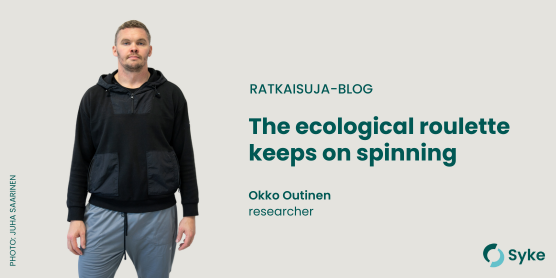
Approximately eight years ago, my colleague published a blog on Finland solving the ecological roulette of the spread of aquatic non-indigenous species (NIS) via internationally trading ships’ ballast by ratifying the Ballast Water Management Convention. Indeed, this ratification pushed the overall percentage of the merchant shipping tonnage of Flag States who have ratified the Convention above 35 percentage, endorsing the Convention to enter into force one year later.
Ecological roulette is a term occasionally used to describe the human-induced spread of NIS, since all new species introductions do not necessarily cause harm to the recipient environment, but it is impossible to predict which species will be harmful – and where, and when.
This roulette is still very much alive, as a relatively new study on NIS introductions to Finnish marine waters indicates that new species continue to arrive through anthropogenic means. In addition, the study took a deep dive into marine monitoring programs in Finland and identified several temporal and spatial gaps in monitoring that complicate marine biodiversity assessments for several organism groups. These assessments are crucial to detect the impacts of NIS on biodiversity, which is perhaps the most reported or suspected adverse effect of NIS globally.
Management of NIS pathways is an important approach to eliminate new NIS introductions, and international shipping has been acknowledged as one of the most important pathways in relation to new introductions. Ships’ ballast water and sediments, as well as biofouling, in particular, have been identified as the major shipping vectors that contribute to the spread of organisms via shipping.
While the day when Finland ratified the Ballast Water Management Convention was a historical one, it took eight years until all internationally trading ships were subjected to the ballast water performance standard to ensure that ships meet viable organism concentration limits in discharged ballast water, required by the Convention. This day finally came 8th of September 2024, although a recent study summarised that ships often fail to adhere to the ballast water performance standard in operational service and thousands of living organisms are occasionally found from discharged ballast water after treatment.
Management of ships’ biofouling is still at early stages globally, as the 2023 Biofouling Guidelines of the International Maritime Organization remain voluntary for the time being.
There will be a doctoral thesis defence devoted to this topic in early 2025. While I am being merely hopeful that this event will speed up solving the ecological roulette, it is likely that another 20–50 years are needed to truly improve the management of the spread of aquatic NIS globally. This is primarily due to the interdisciplinary nature of the topic, where stakeholders from biology, engineering, maritime law, ship operations and various other fields of expertise are needed. However, national, and regional solutions equally exist to solve these problems, as highlighted in the thesis that is currently under preliminary examination.
Okko Outinen works as a researcher at the Finnish Environment Institute’s Marine and Freshwater solutions unit. He works with the spread of aquatic NIS and underwater noise daily and has had several analytical responsibilities at the Finnish open sea monitoring cruises over the past years. Outside the office he puts on pads to play and coach American football, helping him to forget ballast water and species introductions.
Opinions of blog contributors do not necessarily reflect the official views and opinions of the Finnish Environment Institute.